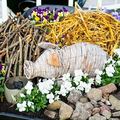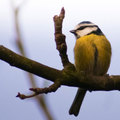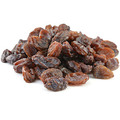How to... plant and lay a hedge
Preserve hedges to mark boundaries and encourage wildlife

Creating or restoring a native hedge is a great way to attract wildlife into your garden or smallholding. Laid hedges have been used since Roman times to fence in livestock and mark boundaries, but they also provide food and shelter for birds, small mammals and insects.
Before 1997, when the Hedgerow Regulations slowed down their demise by effectively introducing planning permission for hedgerow removal, England had lost more than half its hedgerows - 200,000 miles - since the Second World War. Modern farming was largely to blame; hedgerows were demolished to create large arable plains or replaced by cheaper, lower-maintenance wire and post fencing. But at least 68,000 miles have been lost through neglect. Hedges have to be re-laid every 10 to 20 years. If they are left to grow unchecked, or mechanically trimmed, the bottom and inner branches die back, causing gaps that allow livestock to push through and reduce food and shelter for wildlife.
‘Laying' a hedge involves making a cut into upright stems (‘pleachers'), bending them at an angle and weaving them around vertical wooden stakes, usually hazel. Provided that the pleacher is carefully cut so that some of the sapwood remains unsevered, the stump sends up new growth and the stakes rot away to leave a living barrier that is vertically and horizontally impenetrable. Many hedges are also strengthened with ‘binders' - hazel stems woven along the top to keep the pleachers in place.
Both planting and laying must take place in winter, between November and March, when the plants are dormant and there are no nests to disturb. New hedges can be laid when the plants are twice the height of the finished hedge. The RSPB recommends that to provide shelter for birds a hedge should be at least two metres high.
Choose plants according to purpose and location. Prickly species, such as hawthorn and blackthorn, are best for livestock barriers, but to attract wildlife you can add other native plants, such as guelder rose, sweet chestnut and dog rose. Fifty per cent hawthorn with 10 per cent each of field maple, berberis, buckthorn, hazel, dogwood or holly for garden hedges is a good rule-of-thumb.
Buy plants as bare-root whips from specialist nurseries or agricultural suppliers - it's cheaper than buying them in containers. They should be planted in single or double rows.
Specialist tools are essential. A bowsaw to cut the pleacher, a mell (heavy hammer) to drive in stakes and a billhook. The British Trust for Conservation Volunteers (BTCV) sells all of these (01302 572244; www.btcv.org).
Courses and training in techniques are available from many agricultural colleges and rural organisations (for a list contact the National Hedgelaying Society www.hedgelaying.org.uk). But one of the best ways to learn is to join a BTCV conservation holiday and help restore a derelict hedge (01302 572244; www.btcv.org).
You might also like...
How to trim a hedge
How to create a living fence
How to sow and grow: practical advice on sowing seed, taking cuttings and planting










